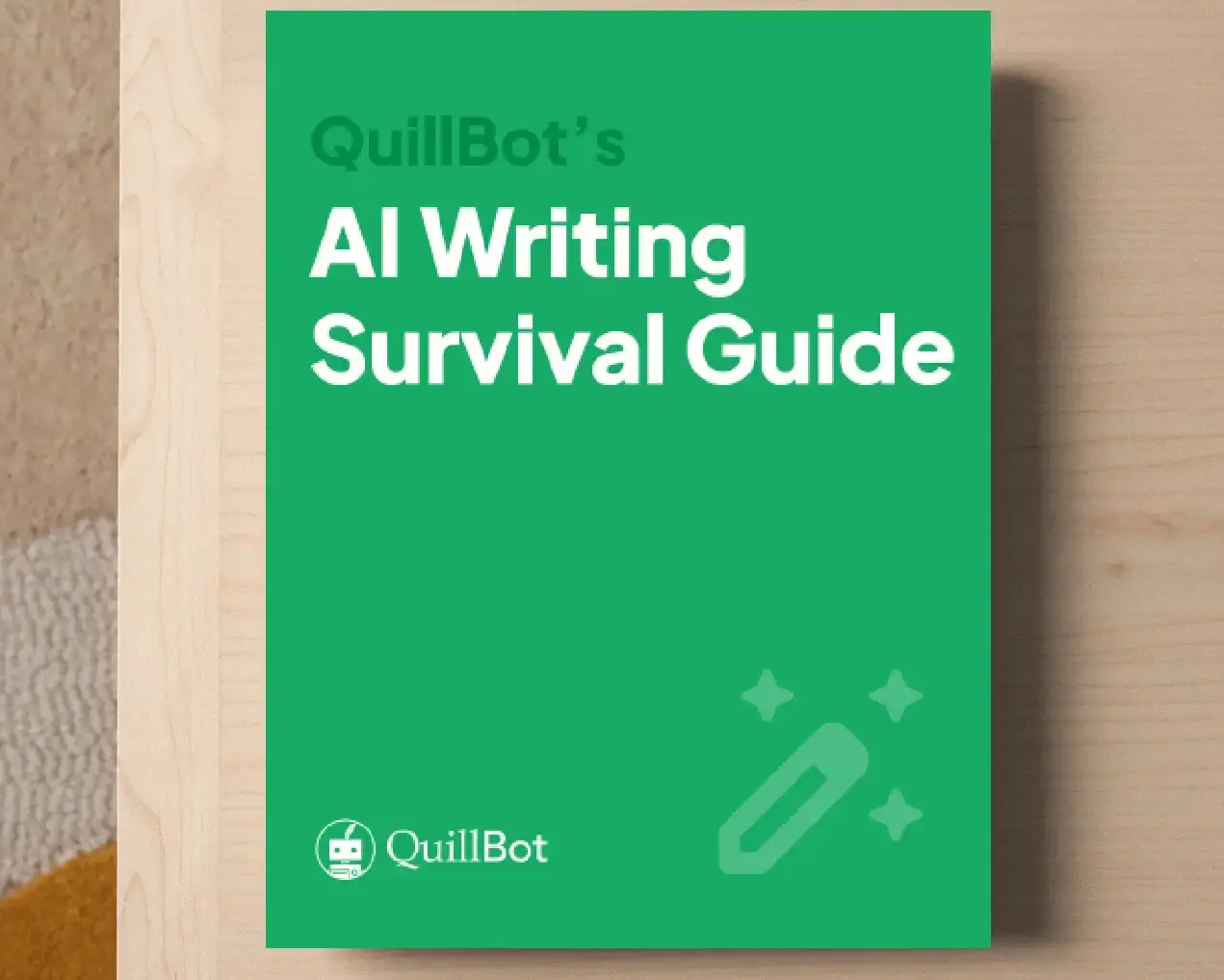How to Use an AI Lesson Plan Generator
A good lesson plan helps you teach with learning objectives in mind, stay focused on student needs, and avoid falling into monotonous routines. Even if you’re an experienced teacher who adapts in the moment based on what’s happening in the classroom, the process of writing a plan helps you anticipate challenges and think of ways to bring content to life for your students.
An AI lesson plan generator—like QuillBot’s free AI lesson plan generator—can be a powerful tool for busy teachers, speeding up the planning process and inspiring fresh ideas.
How to write a lesson plan
Here are some tips for planning a lesson that motivates students toward the topic, keeps them engaged throughout the session, and builds in opportunities for them to reflect on their learning.
1. Motivate
Ways to spark interest in a topic at the start of a lesson include:
- Personalization—e.g., by asking questions that draw out students’ own stories, memories, or experiences related to the subject, or by sharing a relevant anecdote yourself, which can be especially engaging for adult learners
- Stimulating the senses—using a short video clip, a piece of music, or a physical object tied to the lesson theme
- Connecting to current events—linking the topic to something happening in the news or in popular culture to make it feel timely and relatable
- Posing a question or challenge—presenting a puzzling question, scenario, or quick problem to solve that relates to the lesson topic
- Highlighting academic relevance—making it clear how the day’s material connects to upcoming assessments, projects, or key skills
2. Engage
Ways to maintain students’ attention and involvement throughout a lesson include:
- Varying the types of interaction—mixing whole-class discussions, pair work, group work, teacher-led explanations, and student-led activities
- Planning a range of tasks—incorporating different modes such as writing, speaking, problem-solving, and listening, and allowing students to take on different roles within activities
- Varying the pacing—breaking the lesson into shorter segments and alternating between higher-energy and quieter activities for balance
- Keeping students on task—planning how you’re going guide your learners during tasks with targeted questions and positive encouragement to maintain focus and momentum
3. Reflect
Ways to help students consolidate their learning and assess progress include:
- Reflection activities—planning how you’ll prompt students to think back on what they’ve learned. This could involve self-assessment activities, such as asking students to rate their confidence in specific skills, summarize key points in their own words, or complete a quick checklist of what they’ve achieved and what still needs work
- Checking understanding—using questions, quizzes, or short discussions to consolidate learning objectives, both at the end of the lesson and at key points along the way. In your planning, don’t forget to take account of the possible insights you gain from your monitoring of activities (e.g., including an optional activity to review a concept you expect might be challenging, which you can skip if students have already demonstrated strong understanding in their group discussions)
Using an AI lesson plan generator
To get the best results from an AI lesson plan generator, provide as much relevant context as possible in your initial prompt. The more detail you include, the more accurate and useful the generated plan will be. Helpful information to put in your prompt includes:
- Lesson topic or subject
- Learning objectives—i.e., by the end of the lesson, what should the students be able to do (or do better), or what knowledge should they now have (or have begun to develop)?
- The length of the session
- Anticipated difficulties—e.g., concepts that you think the learners will find especially challenging
- How the lesson fits into the course—e.g., by uploading a curriculum map or unit guide so the AI can see where this lesson belongs in the bigger picture
- Learner profile—details like the students’ age, grade level, and current competency in the subject
- Mode of delivery—specify whether the lesson will be taught online, in person, or in a blended format
- Links to homework or assessments—mention if the lesson should tie in with a specific assignment or prepare students for an upcoming assessment
- Preferred structure or format—outline any specific lesson plan template or sequence of activities you want the AI to follow.
Review the AI output carefully, type your feedback into the chat, and request revisions. Continue refining the plan in your conversation with the AI until you have an engaging, tailored lesson plan that fits your specific learning context.
- Learning objectives: By the end of the lesson, students should be able to describe in simple terms what the Big Bang theory is and identify evidence that supports it (e.g., cosmic microwave background radiation, expansion of the universe).
- How the lesson fits into the course: This is the first lesson in a short astronomy unit that will later cover stars, galaxies, and the solar system.
- Learner profile: 6th grade class, mixed ability levels; students have some prior knowledge of the solar system but no formal study of cosmology.
- Mode of delivery: In-person classroom with projector and whiteboard.
- Links to homework or assessments: The lesson should prepare students for a short quiz at the end of the unit and for a creative project where they produce a visual “history of the universe” timeline.
- Anticipated challenges: Visualizing abstract concepts like the “expansion of space” or the idea that the universe had a beginning.
Frequently asked questions about AI lesson plan generators
- What are the elements of a lesson plan?
-
A lesson plan typically includes elements such as:
- Learning objectives
- Descriptions of tasks and activities
- Details on task setup, monitoring, and feedback
- Length of the lesson or session
- Timings for each stage
- Details about the class or group
- How the lesson connects to other lessons and the course/syllabus
- Materials and resources needed
- Anticipated challenges
Why not prompt QuillBot’s free AI lesson plan generator to draft you a lesson plan that contains all of these elements?
- What should I include in a prompt for an AI lesson plan generator?
-
In your prompt for an AI lesson plan generator, include relevant details such as:
- The topic or subject of the lesson
- How long the lesson will be
- The learning objectives
- How the lesson fits in with the rest of the course or syllabus
- Basic details about the learners (age, grade level, current competency, etc.)
- Whether the lesson is online, in person, or in a blended format.
- Details of relevant homework assignments or assessments
- Anticipated challenges (e.g., concepts you think will be particularly challenging)
QuillBot’s free AI lesson plan generator can help you to write a lesson plan containing all of these elements.
Cite this Quillbot article
We encourage the use of reliable sources in all types of writing. You can copy and paste the citation or click the "Cite this article" button to automatically add it to our free Citation Generator.
QuillBot. (2025, August 20). How to Use an AI Lesson Plan Generator. Quillbot. Retrieved November 4, 2025, from https://quillbot.com/blog/ai-writing-tools/how-to-use-an-ai-lesson-plan-generator/

